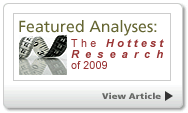
きっとああいう場に立てたと思います」川澄奈穂美、サッカー日本代表
For the list of typos in Komatsu et al. (2009) [WMAP 5-year paper], please click here. [Last updated: March 8, 2012]
For the list of typos in Komatsu et al. (2011) [WMAP 7-year paper], please click here. [Last updated: May 2, 2012]
Click here to download a note on the WMAP 5-year distance prior including BAO. [Last updated: October 12, 2009]Click here to download a note on the WMAP 7-year distance prior including BAO. [Last updated: May 29, 2010]
Eiichiro Komatsu
First Pitch!
Prize!
More Recent Prize!
My Academic Tree
こんな活動も大好きです
こんなのも
最近はこんな感じです
より最近はこんな感じ
Max-Planck-Institut fuer Astrophysik
Karl-Schwarzschild-Str. 1
Postfach 1317
85741 Garching, Germany
contents:
[What's New!!]
[CV (6/20)]
[Research Activities (12/31)]
[Publications (8/7)]
[Talks (6/27)]
[Documents (6/4)]
[News Papers/Magazines/Books (8/19)]
[Yoshinoya]
[Same Class]
[Tips (12/21)]
[Links]
[Cosmology Routine Library (CRL) in Fortran (4/25)]
[ astro-ph: new]
[ astro-ph: find] [ astro-ph: uploads]
![]()



